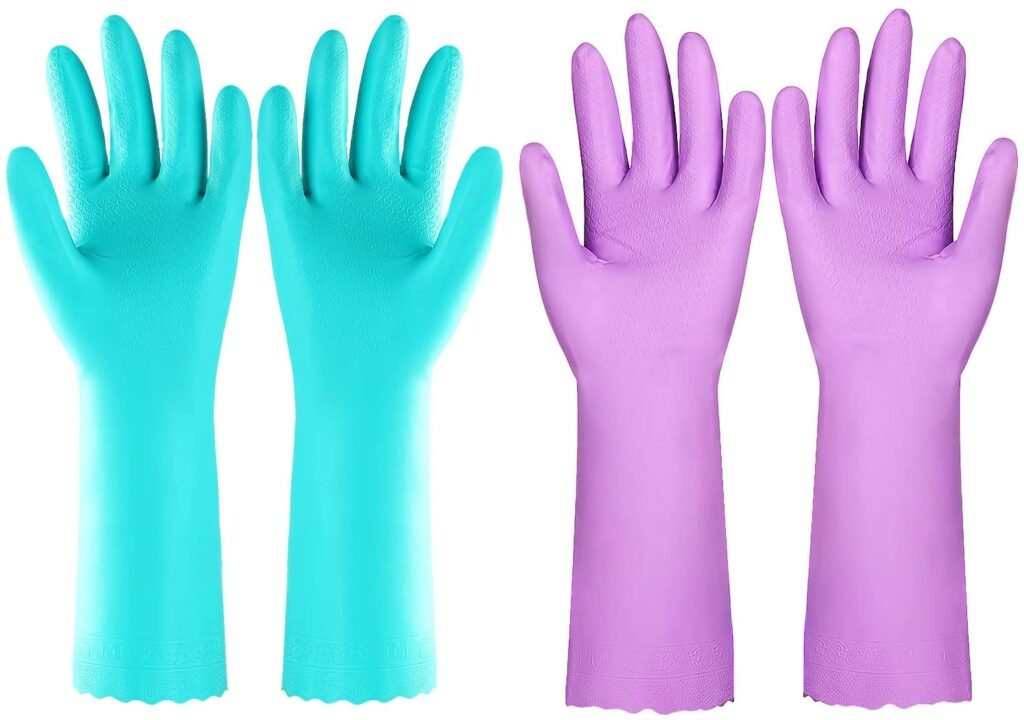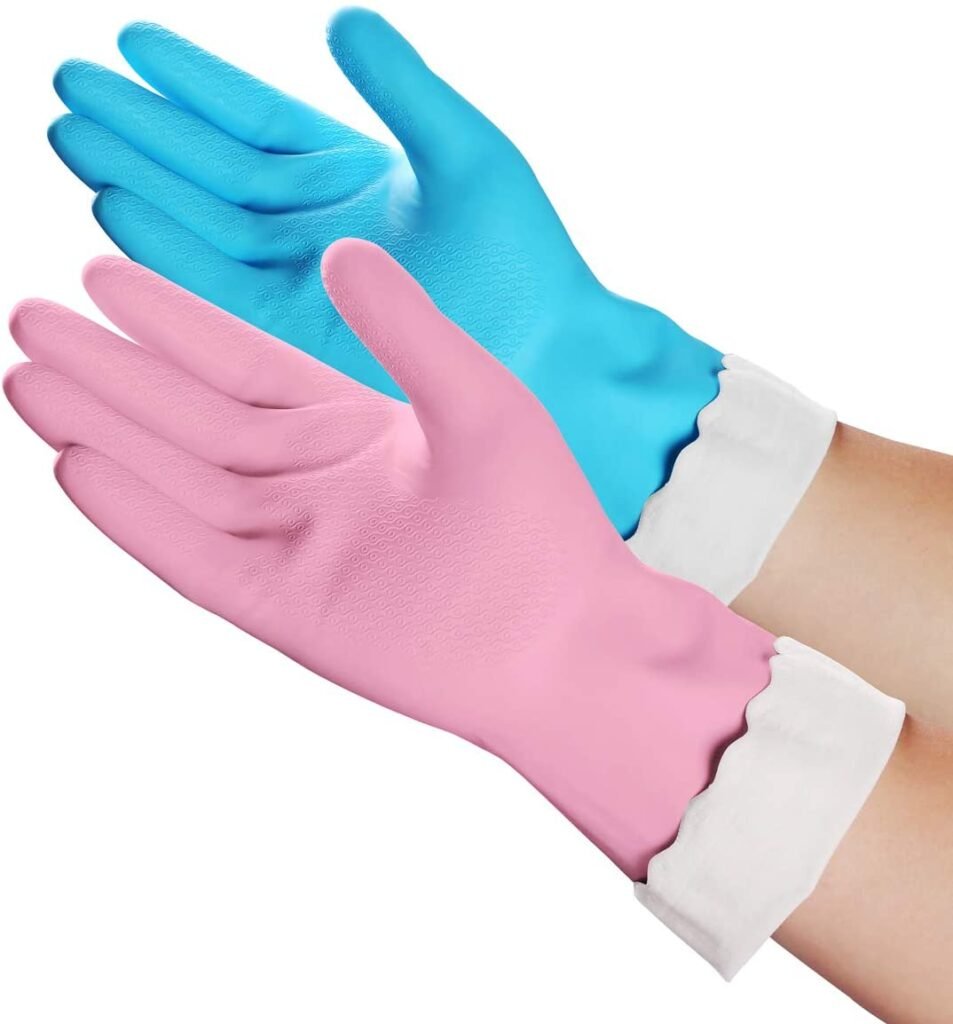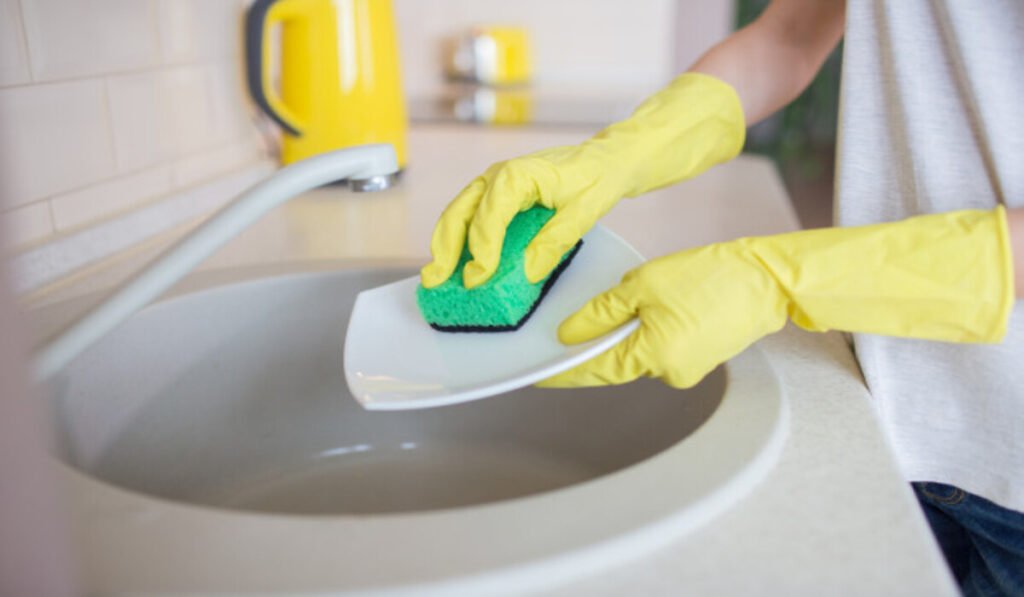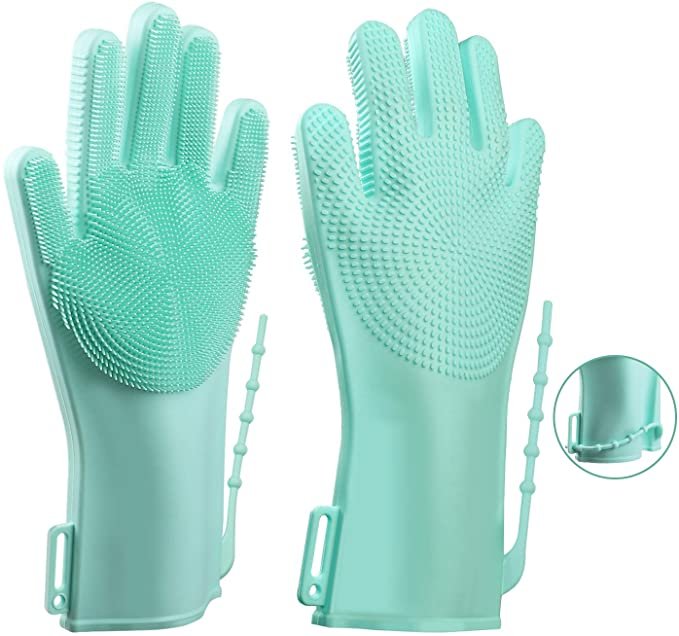Kitchen dishwashing gloves are an essential part of your cleaning collection – no, doing dishes is not for the faint-hearted. It requires continuous contact with soap and water. This may lead to dry skin, burning sensations or allergic reactions. Here is where gloves for dishwashing jobs come to the rescue! Not only do they provide excellent protection for your hands from harsh soaps and detergents, dish gloves are particularly handy when cleaning out grime using hot water.
Material
Material is a key factor in determining the durability, safety, comfort, and heat conductivity of gloves. The three main materials used for making dishwashing gloves include latex, nitrile, and vinyl.
Types of Gloves
Polyethylene Gloves
Poly gloves are very thin and made for light-duty tasks. They are also very economical and great for food use when workers are constantly changing gloves between prep tasks.
Latex Gloves
If you are looking for an incredibly versatile type of gloves, latex is a great choice. While it does contain a protein that can cause allergic reactions in some people, this material is useful for nearly any application other than high-risk uses.
Nitrile Gloves
Perhaps the most versatile gloves, nitrile gloves come in a variety of thicknesses and types from 3 mil thick foodservice gloves to 6 mil thick industrial gloves. They can be used for nearly any task, and are also available in a low dermatitis style.
Neoprene Gloves
Flexible, heat-resistant, and sometimes available with a flock lining, neoprene gloves are thick and reusable. They are perfect for high-risk applications, dishwashing, wet handling, and more.
Vinyl Gloves
Made for food service, vinyl gloves are comfortable, safe, and latex-free. They can be used for general tasks, food prep, cooking, serving, or even non-high-risk janitorial work.
Reasons to Wear Dishwashing Gloves
Protection
There is a lot of dirt and germs that reside in or around dirty dishes and some of that can cause infection when it encounters your body. Thus, since your hands are the ones that touch the dishes, the food debris, and sometimes dirt, it is important to insulate them from exposure to potential sources of infection-causing germs, using dishwashing gloves. Gloves will also protect your hands from sharp utensils and damage to fingernails.
Enhanced Grip
When you have your dishes submerged in soapy water, they can get very slippery, and the constant grabbing and releasing can take up a lot of effort and time. Dishwashing gloves, especially those with textured palm patterns and designs are built to increase your grip on the dishes, hence completing the task faster and with minimal effort.
Flexibility
You want dishwashing gloves that are tough enough to withstand tearing and breaking, but flexible enough to maximize comfort and movement of the hand. Luckily, the main materials used to make these gloves – latex, vinyl, and nitrile – are highly flexible and won’t constrain your hands when doing cleaning tasks.
Sanitize dish gloves
For most dishwashing gloves, the best method is to clean them with mild detergent and warm water to remove dirt. Then, turn them inside out and wash the interior using the same sudsy water. Finally, rinse the gloves with warm water and let them hang to dry.
ORKK TOP SUGGESTIONS :

Reusable Dishwashing Cleaning Gloves with Latex free, Cotton lining ,Kitchen Gloves 2 Pairs (Purple+Blue, Medium)

Vgo 10-Pairs Reusable Household Gloves, Rubber Dishwashing gloves, Extra Thickness, Long Sleeves

Cleaning Dishwashing Gloves – Household Kitchen Soft Cotton Flock Lining Gloves – 2 Pairs Reusable Waterproof Rubber Gloves(Medium, 2 Colors)

Playtex Living Reuseable Rubber Cleaning Gloves, Color May Vary (Small, Pack – 2)

anzoee Reusable Silicone Dishwashing Gloves, Pair of Rubber Scrubbing Gloves for Dishes, Wash Cleaning Gloves with Sponge

LANON Wahoo 3 Pairs PVC Household Cleaning Gloves, Reusable Unlined Dishwashing Gloves, Non-Slip, Medium


